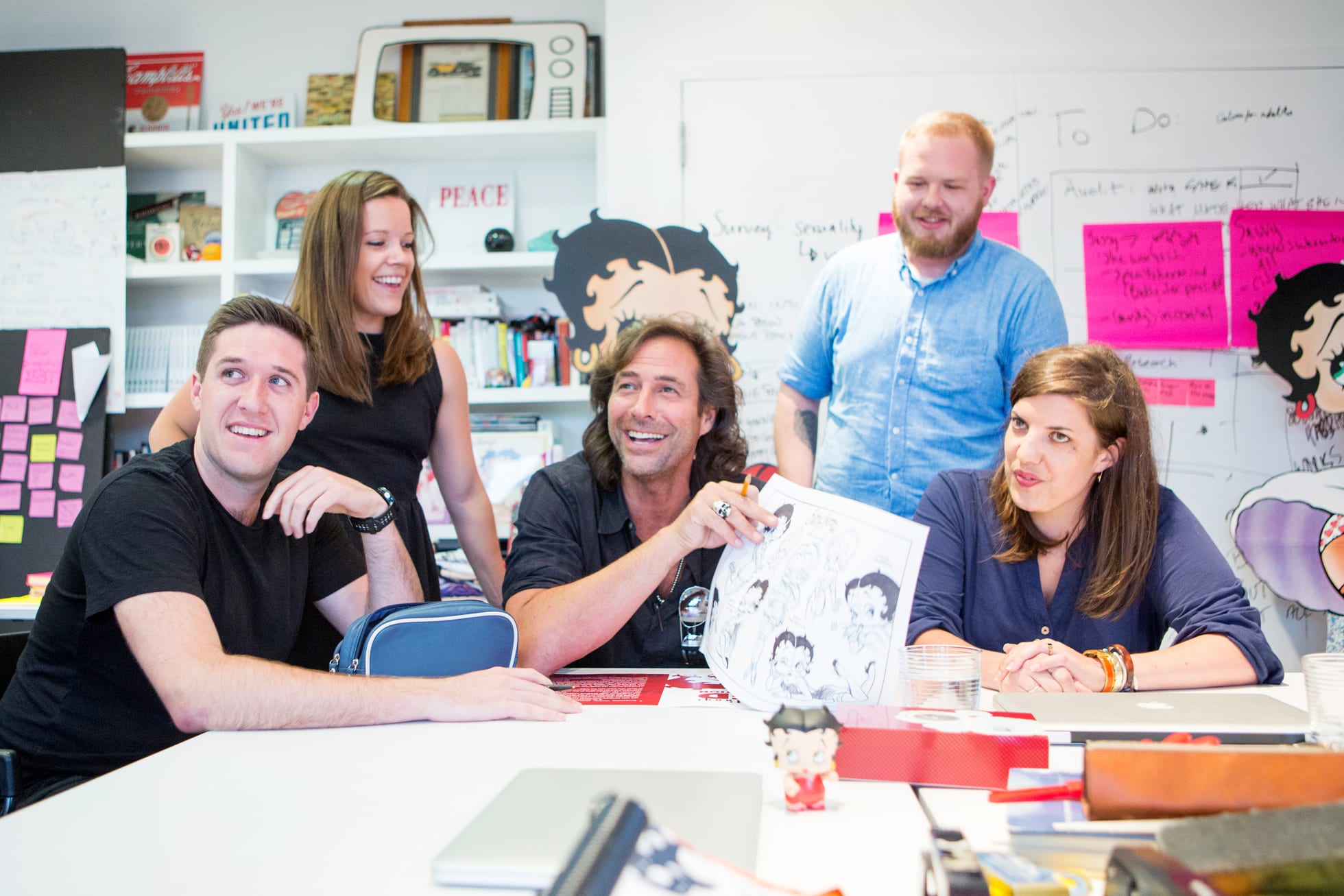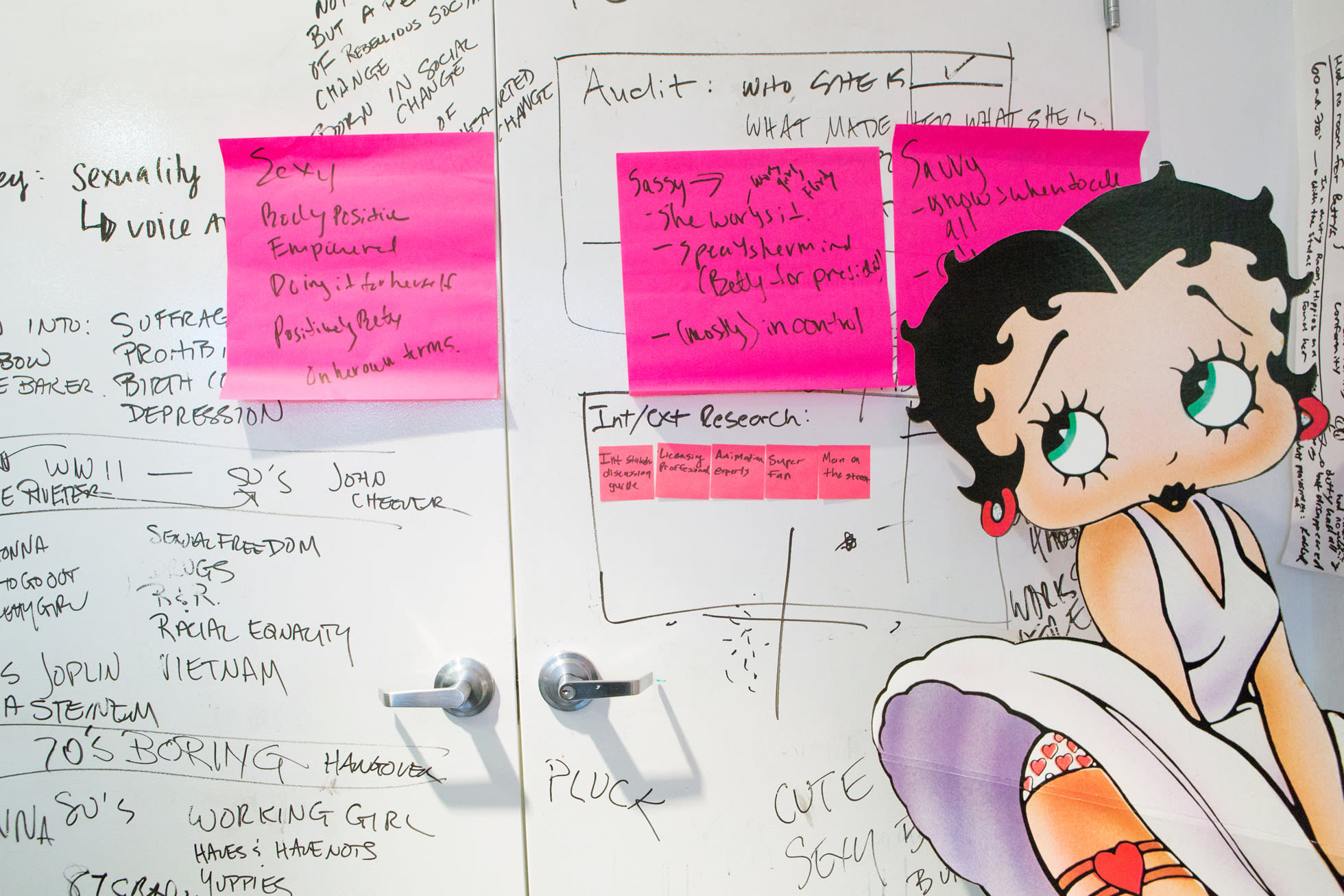
From left: MPS Branding class of 2016 students Ryan Hausberger, Lauren Vellek, C.J. Draper and Vanessa Machir look at Betty Boop art with King Features VP and SVA graduate Frank Caruso. Photo by Jessica Miller.
For their final thesis projects, MPS Branding students at SVA are split into groups and assigned to research and plan the rebranding of some real-life person (e.g., Madonna, in 2015), place (e.g., Detroit, in 2014) or thing (e.g., the Transportation Security Administration, in 2013). Usually the exercise is hypothetical—a way to test the skills and knowledge students have developed over their two years in the program. But in spring 2016, one student team joined a property’s representative—King Features Syndicate—to work on a strategy that would actually be implemented. The property? Betty Boop™.

A Betty Boop model sheet used by a team of MPS Branding students as reference for their thesis project. All Betty Boop images courtesy King Features Syndicate, Inc./Fleischer Studios, Inc. TM Hearst Holdings, Inc./Fleischer Studios, Inc.
Animator Max Fleischer created Betty Boop in 1930, and the character went on to become a symbol of coy but assured sexuality and an icon of early American animation. Over the years, working closely as exclusive worldwide agent with property owner Fleischer Studios, King Features has licensed Betty’s logo and image to such brands as Adidas, Coca-Cola and Harley-Davidson. Earlier this year Frank Caruso (BFA 1985 Media Arts), King Features’ vice president of creative, contacted SVA to see whether any students would be interested in working on an effort to reintroduce the character to consumers—and younger demographics in particular. Anna Ogier-Bloomer, an SVA Career Development assistant director, facilitated a collaboration with MPS Branding Chair Debbie Millman, and Caruso’s offer became the thesis assignment for class of 2016 students C.J. Draper, Ryan Hausberger, Vanessa Machir and Lauren Vellek.

Notes on Betty Boop's history and defining characteristics in the MPS Branding team's workspace. Photo by Jessica Miller.
Through extensive research, interviews and brainstorming, the team put together a brand book for Betty, which they presented to King Features in July. Betty’s true identity, they said, is funny, self-sufficient and streetwise—"the original 'sass symbol.'" The students recommended that King Features seek out partnerships with brands that embrace and reinforce these attributes.
"When I first sat down with Lauren, C. J., Vanessa and Ryan, they instinctively recognized the importance of Betty Boop and what she represents," Caruso says. "They also recognized the importance of how a character needs to adapt. Their research and creative thinking have helped reposition Betty Boop to continue her journey and find her place in today’s Millennial mindset."
Next year, King Features is rolling out several collaborations as part of their Betty Boop campaign. Among them: Betty Boop Red, a custom shade created by Pantone, provider of professional color standards for the design industries, and an original Betty-inspired dress by fashion designer and Project Runway judge Zac Posen.
A version of this article appears in the fall 2016 issue of Visual Arts Journal.

